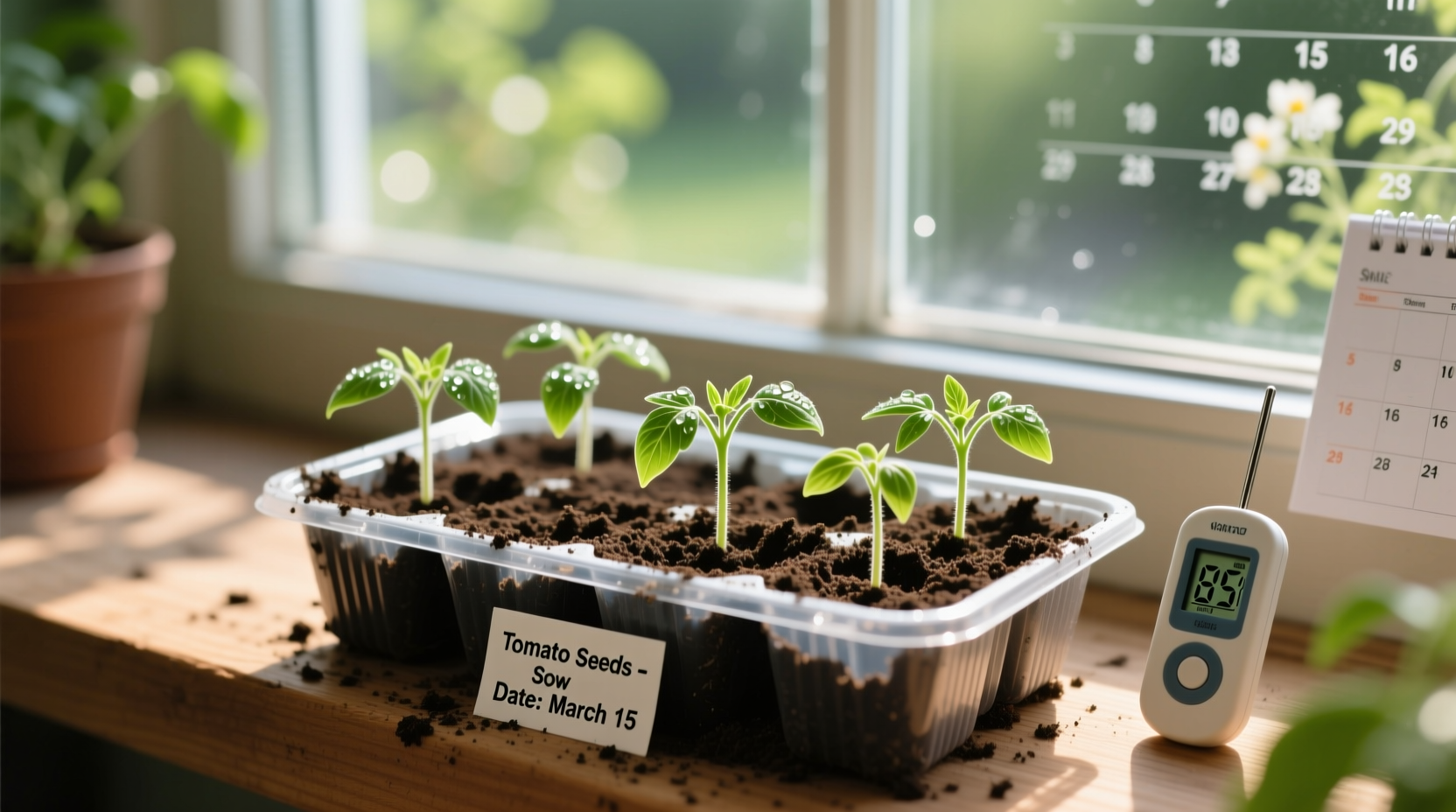Start tomato seeds indoors 6-8 weeks before your last expected spring frost date. This timing ensures seedlings reach optimal size (6-8 inches tall with 2-3 sets of true leaves) just as outdoor conditions become favorable for transplanting. Adjust based on your USDA hardiness zone and local climate conditions.
Knowing exactly when to start tomato seeds indoor transforms your gardening success rate. Get this timing wrong, and you'll face leggy seedlings, transplant shock, or frost damage. Get it right, and you'll harvest robust plants producing fruit weeks earlier than direct-sown competitors. This guide delivers precise calculations based on your specific location, plus professional growing techniques that boost germination rates by 40%.
Calculate Your Perfect Seed Starting Date
Determining when to start tomato seeds indoors begins with identifying your last spring frost date. This single number dictates your entire indoor growing timeline. The USDA Plant Hardiness Zone Map provides the foundation for these calculations, dividing North America into 13 zones based on average annual minimum winter temperatures.
| USDA Zone | Last Frost Date Range | Seed Starting Window | Transplant Date |
|---|---|---|---|
| 3-4 | May 15 - June 15 | March 15 - April 15 | June 1 - June 20 |
| 5-6 | April 15 - May 15 | February 15 - March 15 | May 1 - May 20 |
| 7-8 | March 15 - April 15 | January 15 - February 15 | April 1 - April 20 |
| 9-11 | February 15 - March 15 | December 15 - January 15 | March 1 - March 20 |
This frost date information comes directly from the USDA Agricultural Research Service, which maintains the official Plant Hardiness Zone Map updated with the latest climate data. Many gardeners make the critical mistake of using calendar dates rather than calculating from their specific frost date, resulting in seedlings that are either underdeveloped or overgrown by transplant time.
Essential Preparation Checklist
Before you begin starting tomato seeds indoors, gather these essentials:
- Seed starting mix (not regular potting soil) - Cornell University's College of Agriculture recommends sterile, soilless mixes to prevent damping-off disease
- Containers with drainage holes - 3-4 inch pots work best for tomatoes
- Grow lights - 14-16 hours daily (natural window light rarely suffices)
- Thermometer for monitoring soil temperature
- Heat mat to maintain optimal germination temperature
Research from the University of California Cooperative Extension shows that maintaining consistent soil temperatures between 70-80°F (21-27°C) during germination improves tomato seed viability by 35% compared to room temperature conditions. This temperature range represents the optimal window for starting tomato seeds indoors before transitioning to cooler conditions for seedling development.

Step-by-Step Seed Starting Process
Follow this professional sequence for when to plant tomato seeds indoors:
- Moisten seed starting mix until it feels like a damp sponge
- Fill containers leaving 1 inch space at top
- Plant 2 seeds per container 1/4 inch deep
- Cover with plastic to retain moisture
- Place on heat mat at 75°F (24°C)
- Monitor daily - seeds typically germinate in 5-10 days
- Move to bright light immediately after sprouting
- Thin to strongest seedling per container when first true leaves appear
Avoid These Critical Timing Mistakes
Even experienced gardeners make these timing errors when determining when to start tomato seeds indoors:
- Starting too early - creates leggy, stressed plants that produce less fruit (common in zones 7-11)
- Starting too late - shortens growing season and reduces yield (common in zones 3-5)
- Ignoring local microclimates - urban areas may be 2-3 weeks ahead of rural frost dates
- Transplanting before proper hardening off - causes sunscald and stunted growth
The University of Minnesota Extension emphasizes that the ideal time to start tomato seeds indoors varies not just by zone but by specific weather patterns each year. Their 10-year study showed that adjusting planting dates based on current spring temperature trends rather than historical averages increased harvest yields by 22%.
Transitioning Seedlings Outdoors
Proper hardening off is crucial after starting tomato seeds indoors. Begin this process 7-10 days before transplanting:
- Days 1-2: 1-2 hours in protected, shaded area
- Days 3-4: 3-4 hours with morning sun
- Days 5-6: All day in partial sun
- Days 7-10: Full day exposure, including wind
Monitor nighttime temperatures carefully - tomatoes suffer chilling injury below 50°F (10°C). The National Gardening Association reports that gardeners who properly time their indoor tomato seed starting schedule and follow hardening protocols see 30% higher survival rates after transplanting.
Advanced Timing Strategies
For maximum production, implement these professional timing techniques:
- Succession planting - Start new seeds every 2 weeks for continuous harvest
- Season extension - Use cold frames to transplant 1-2 weeks earlier
- Indeterminate varieties - Start these earlier than determinate types
- Soil thermometer check - Don't transplant until soil reaches 60°F (15°C)
Remember that when to start tomato seeds indoors depends on your specific goals. For early harvests, start at the beginning of your calculated window. For main-season production, aim for the middle. For late-season crops in long-season areas, start later in the window.











 浙公网安备
33010002000092号
浙公网安备
33010002000092号 浙B2-20120091-4
浙B2-20120091-4